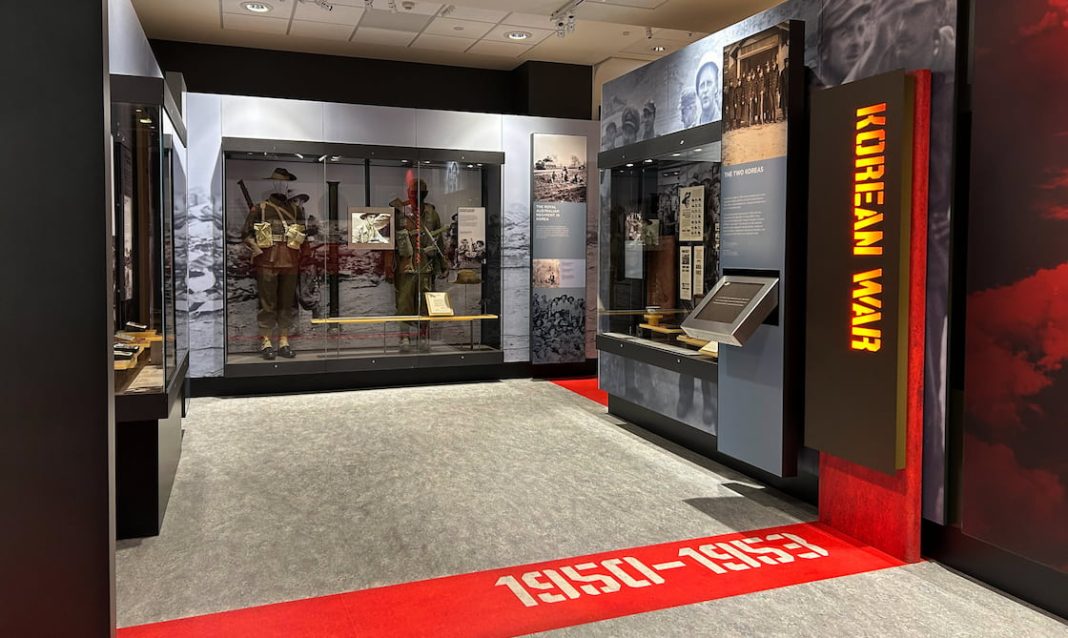The Australian War Memorial will launch its revised Cold War Gallery on the 74th anniversary of the start of the Korean War, Tuesday 25 June.
From the dawn of the nuclear age with the dropping of atomic bombs over Japan to the collapse of the Soviet Union in 1991, the new gallery takes visitors on a journey through the Cold War that dominated world politics in the second half of the 20th century.
“Australia played an important role throughout the Cold War,” Australian War Memorial Assistant Director, Anne Bennie said.
“It is appropriate that alongside the modern conflicts galleries being developed, this revised presentation of Australia’s involvement in the Cold War can be re-opened for the veterans and our many visitors.”
The gallery includes information from the Korean War, the first major conflict of the Cold War.
Up to four million people died during the Korean War, including two million civilians. The new gallery items highlight the suffering of civilians, with the inclusion of a South Korean child’s traditional dress and a lighter gifted to an Australian solider by a Korean child who was adopted by his unit.
“We also have the slouch hat and binoculars of Lieutenant Colonel Charles Green DSO, the only Australian battalion commander to die in active service post 1947,” Australian War Memorial Historian, Michael Kelly said.
For the first time, the North Korean and Chinese forces will have their story presented in the gallery, through the display of an original North Korean army uniform.
“The Korean War played a major part in the formation of military alliances between Australia and its allies,” Michael Kelly said.
“The ANZUS treaty was created by Australia, New Zealand and the United States as they fought side by side on the Korean peninsula in 1951.”
“The Republic of Korea has never forgotten the support of Australia and its allies during the Korean War,” Colonel Jinbu Kim, Defence Attaché at the Korean Embassy in Australia, said.
“I hope the new gallery will give visitors to the Memorial a greater understanding of the friendship between our two countries.”
“The revised gallery will examine Australia’s involvement in major conflicts like Korea and the Berlin Blockade, but also how the Cold War affected life at home,” Michael Kelly said.
“For the first time, the gallery will look at ASIO surveillance of suspected communists and attempts by the government to ban the Australian Communist Party.”
Alongside displays on Australia’s involvement in major conflicts, the gallery explores National Service, our first peacekeeping operation in 1947, the blockade of Berlin, and British atomic testing in Australia.
“The Cold War ended with the collapse of the Soviet Union in 1991,” said Anne Bennie. “But this gallery explores how it continues to affect the world in the 21st century.”



